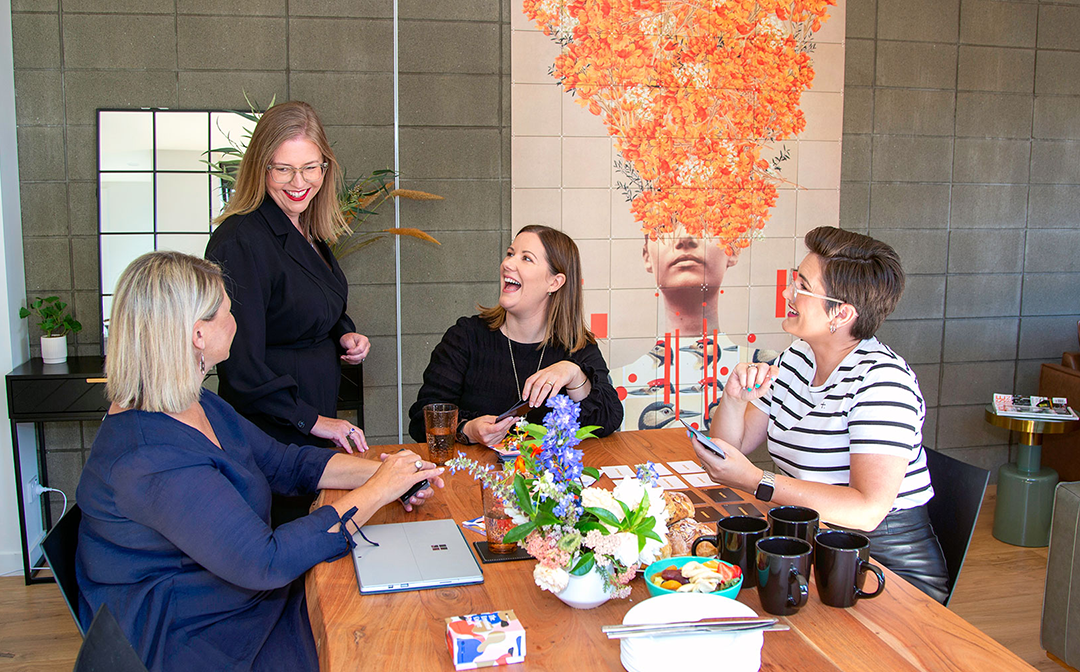
by Louise Hill | May 4, 2023
At a time of economic downturn, an increase in the unemployment rate is expected to reach around 5% in the next 12 months in New Zealand. As an employer, you may be faced with the unenviable task of making some of your employees redundant.
Making an employee redundant is never easy, but it can be more manageable if you follow the right steps. adversary
Here are our Top 10 tips for considering Redundancy and Restructure in your business.
- Be clear and communicate your reasons effectively. Make sure the message you share with your employees is as clear and consistent as possible.
- Prepare to answer questions. Think about the questions you may be asked and prepare a response that is clear and succinct. If needed defer while you gather information to be able to answer with facts, rather than give misinformation on the spot.
- Listen. Try not to talk too much when employees are giving their input. It’s better to listen to their concerns and answer them effectively.
- Avoid leaks. Consider who gets what information, when, throughout the process, before breaking the news that redundancies will be made. Avoiding unnecessary stress.
- Provide a clear end date. Giving a firm end date will make it easier for them to move on and start looking for a new job. Be very clear if that date moves.
- Share resources that can help your employees. Might help them feel less alone and anxious about being made redundant.
- Don’t make your employees keep it a secret. Secrets isolate redundant employees further, as they won’t be able to seek support from friends and colleagues.
- Don’t try to make the redundancy sound positive. Attempting to make the redundancy seem like a good thing to put your employees at ease is not a good idea.
- Don’t announce redundancies before a weekend or holiday. By announcing the news earlier in the week, at least they can air any grievances with you and seek support from colleagues.
- Look after yourself. Don’t forget about yourself! It’s never easy to make someone redundant and can feel very isolating.
You could also offer your employee external outplacement support. This gives them an opportunity to take control and respond proactively to the changes taking place to shape their own future.
Offering this support to your employees has all of the following potential benefits:
- Business reputation and brand is retained in the market by exiting employees who have been treated with dignity.
- Demonstrates a duty of care and goodwill.
- Eases the pressure on managers/HR staff by using independent, external providers to provide support.
- Demonstrates to exiting staff and also those that stay behind that the employer values its people.
- May make all the difference to that employee wanting to work in your organisation again in future.
- More often than not, we also then find that those who are offered this level of support go on to a positive experience, because they’ve considered their future with professional support, rather than making reactive decisions which can often lead to repeated experiences that don’t serve them well.
Remember…
“People will forget what you said, people will forget what you did, but people will never forget how you made them feel” – Maya Angelou

by Louise Hill | May 4, 2023
There is a lot of talk in the media about what the next 12 months is likely to bring. Following the Covid fallout and recent severe weather events, we are also heading towards an election. In a nutshell, this is what we are hearing in the media.
- Recession is looming, with inflation close to a 32 year high at 7.2 percent annual rate.
- Living costs are expected to continue increasing this year, and income growth is not likely to keep pace with this, despite another year of strong wage growth.
- Throughout 2023 New Zealand households will be spending more on their mortgage, and therefore not be able to spend as much in the economy.
- The devastating impacts of recent weather events have resulted in widespread economic disruptions throughout the upper and central North Island, and they have had a particularly large impact on sectors like horticulture.
- There are signs that the labour market has started to turn in recent months, with the number of job advertisements trending down since mid-2022. As domestic demand weakens over the next few years, we expect to see a related downturn in jobs growth, along with a rise in the unemployment rate to 5.2% by 2025.
- Businesses across the economy have seen their margins squeezed, with operating costs rising by an average of 8% over the past year. At the same time, many businesses are reporting a drop in forward orders.
Luckily it is not all gloom and doom. There is also some positive news.
- The continuing tourism recovery means that we are back to about two-thirds of pre-pandemic visitor numbers to New Zealand, and there’s still some scope for other markets to recover, which would help our tourism and entertainment businesses.
- Recovery of international economies may also have a positive impact on NZ organisations that export goods. After peaking in early 2022, New Zealand’s commodity prices are ascending again.
What we are hearing in the media is also being reflected in conversations we are having with organisations that we work with.
These are the key themes that we are seeing.
- Organisational restructure is on the rise again, some due to changing landscapes rather than for economic reasons, e.g., the NZ Public Sector. Others are doing so due to financial pressures, organisations futureproofing themselves or refining their offering.
- Scrutiny of expenditure to ensure that every dollar spent offers value in return. We are delighted to see that investment in people is still seen to be valuable by many, as it is times like this that the perceived “nice to have” people areas of business get the biggest budget cuts.
- There is increased awareness of the importance of humanising the workplace. For some organisations we work with, this is new territory. Many have been results-focused, often at the expense of people. They are seeing the benefits of defining a team’s emotional culture and agreeing a set of behaviours around these to drive performance.
- Our team has used the Emotional Culture Deck toolkit extensively post Cyclone Gabrielle. Two of our team are based in impacted areas and wanted to do something to help their communities. This proved to be an invaluable tool to start discussions about how people were feeling, taking conversations beyond “How are you doing?”
Despite the challenging time, we are seeing some real positives. We know that investing in people, and ensuring they feel valued, encourages them to be their personal best, but also being realistic about where caution and restraint is needed. This stands an organisation in better stead once they get through to the other (and hopefully brighter) side, post-recession, that we’ve seen in these cycles before.
It is refreshing to talk to leaders who really think strategically, mapping out their journey and building resilience into their organisations by investing in the right areas. After all, businesses don’t exist without people.

by Louise Hill | Mar 23, 2023
We live in rural Hawke’s Bay, just outside Napier, not far from both Rissington and Eskdale, 2 of the areas hit hardest. I write this on Day 21 post Cyclone Gabrielle. Our community is still cut off and without power as access to us is tricky due to undulating terrain and infrastructure damage.
Cyclone Gabrielle hit us fast and hard on the night of Monday 13th February. Once we were able to go outside and assess the damage at daylight. I would describe what we saw as ‘biblical’ in proportion and I have heard the term ‘Armageddon’ used frequently since within our community.
Some properties were under water and there was 2m of mud on a long stretch of road outside our house. Big pieces of the road had gone as culverts were full of silt and debris. We had no cell reception, internet or power and had no way of knowing what was happening in the outside world, other than via a satellite phone that we could send text messages out on. What followed in days to come was quite incredible.
Those who could get out of their property checked in on neighbours. The most senior member of our community (age 88) drove as far as he could once the rain settled to invited neighbours to a community meeting at his home that afternoon. 70% of our cut-off community were represented at that meeting. Many had never met each other prior to this.
The meeting was chaired by our neighbour who is in the NZ Police. We made a list of all present, as well as others that were accounted for. This was reported to Civil Defence immediately.
The initial meeting was used to introduce people, identify skills and experience in the community, and to identify key roles moving forwards. This was kept at a high level to start with. The diversity of skills were astounding, and this diversity has proven to be extremely helpful in this unprecedented situation.
We discovered that we have people that operate diggers and heavy machinery, those that fix things, animal experts, mechanics, administrators, people who can coach, fencers, teachers, builders, farmers, someone with civil defence experience and the list goes on. We even discovered that we have a yoga instructor and a massage therapist!
The initial meeting brought this little community together and has continued to go from strength to strength. We voted a co-ordinating leader in who has good local knowledge and experience in leadership roles. There are a few simple unwritten rules;
- Egos are thrown out the window.
- We have a central voice and co-ordinator (our community leader) who openly admits that they do not have all the answers.
- Our input is always invited.
- Our leader is skilled at focusing on the desired destination and involving the rest of the team to map out the journey.
- Everyone has a voice.
- All ideas are encouraged and nothing is a silly idea.
- Everyone has a part to play in moving forward towards a desirable outcome.
- Every team member is made to feel that they add value.
The power of this team is quite incredible, and watching our team evolve over the past weeks has been incredibly inspiring.
It has seemed simple, and the key thing for our team has been that egos and desire to control have been left at the door.
4 weeks later…
At the time of finalising the newsletter (4 weeks post cyclone), the community is still cut off, some have power returned while others do not, some can work, others cannot. They have this week got a footbridge to get across the river so that supplies can be delivered to the river’s edge or somehow get a car from there to get to town.
They have created their own track to exit out the other end of the road in a four-wheel drive which makes their usual half hour trip to Napier a 3-hour trip (one way). They are finding their own solutions, making use of the skills in their community and supporting each other. They have days where it feels manageable and days when it feels overwhelming. Both are normal and will continue for some time yet.
Isn’t it amazing what comes out in human nature in times of crisis – we come together, we connect, and we find our new norms. We assign roles, build on strengths and support each other’s areas of vulnerability.
What, through times of crisis, can we bring into everyday life, that doesn’t need extremes to bring out the camaraderie, understanding and support that these moments evoke. And let’s not forget that there are still people needing support, feeling forgotten and exhausted close to home right now. While the world continues as normal for many – remember to show empathy to others, we don’t know what their reality looks like.
If you’d like to see more of Lou’s community you can watch a snip on Seven Sharp here.

by Louise Hill | Dec 20, 2022
Having worked with a large client portfolio of organisations for more than 4 years across Private, Public and Local Government sectors, the past 12 months highlighted some interesting trends. I would like to share the key insights, from my perspective, with you. If you connect the dots, it is a bit of a vicious circle with one thing often leading to another.
Common challenges that I have seen were as follows…
- Resource levels and support
Many organisations reduced headcount during lockdowns and subsequently faced challenges due to diminished resources when returning to more typical BAU. This impacted on staff at all levels, leaving many feeling stretched, overwhelmed and also frustrated. It also led to some People Leaders getting more ‘hands-on’ and operational, reducing their capacity to lead others, also to coach and inspire their people, and raising potential wellbeing red-flags.
- Staff Retention
There has been much hype in the press about ‘The Great Resignation’ over the past 12-18 months, and more recently, ‘The Silent Resignation’ or ‘Quiet Quitting’. As has been well publicised, employee feedback indicated that this was driven by reasons such as employee expectations of flexibility of working hours, wanting to achieve better work-life balance and the ability to work remotely. Increased workload and salary-freezes in some sectors have only added to the challenge of retaining staff.
Whilst I believe that these factors are all relevant, I think that other factors also play a part. These are some of the other common reasons that I believe that employees felt disengaged, and subsequently disconnected, from their role, team or organisation. Feedback is based on exit interview feedback, as well as discussions with many HR Professionals I work with.
- Poor employee experience – Employees did not believe that their individual contribution in achieving the organisation’s objectives was recognised. Employees did not feel that they were asked for feedback on how to improve the business, or that their ideas were acknowledged if they were. Many employees did not feel that they were valued.
- Change Management – Employees did not feel sufficiently involved in changes made that affected them (change management 101). Post lockdowns, organisational restructure was quite common but many felt that this change happened to them rather than through them. Other less dramatic changes, were not well managed and often increased negative feelings and lead to employees looking to create their own change.
- Leadership Effectiveness – Examples are leaders not ‘walking the talk’, leaders’ behaviour not being reflective of organisational values, poor internal communication with information not being cascaded down, ineffective and irregular performance discussions, and also poor (or even lack of) people and leadership skills. The perception of poor performance not being managed within a team also led to a reduction in employee engagement, discretionary effort made by them and ultimately them feeling disconnected.
- Recruitment and Talent Management
It was evident that HR teams were stretched to the limit during the past 12 months, with many spending an inordinate amount of time and energy focused on talent management and recruiting new staff. The tight labour market, employee turnover and staffing shortages – including within HR as well as outside of HR, increased the pressure from a resourcing, wellbeing and cost perspective.
On the flipside of these examples, I can say many organisations have this stuff nailed. The positive impact of this is huge and can lead to better efficiency and productivity, creating excellent team and organisation cultures. This makes it easy to attract and retain the very best talent and drive great results, despite the challenging environment.
The good news is that all of these are areas that can be improved upon. The starting point for any organisation is to understand what your specific paint- points are. That way, you can design and implement a plan to reduce pain-points, equip your leaders with the tools they need, and build on your organisation’s strengths.
Including your people’s voices in that process leads to a far more accurate and realistic process, than expecting leaders’ perspectives to be relevant without the input of the people they’re making decisions about/for. An often-overlooked aspect that can have the biggest impact on desired results. Having worked for over 4 years with the fabulous AskYourTeam continuous involvement system, I can truly vouch for the real difference doing this effectively can make to driving success through an organisation’s people.




